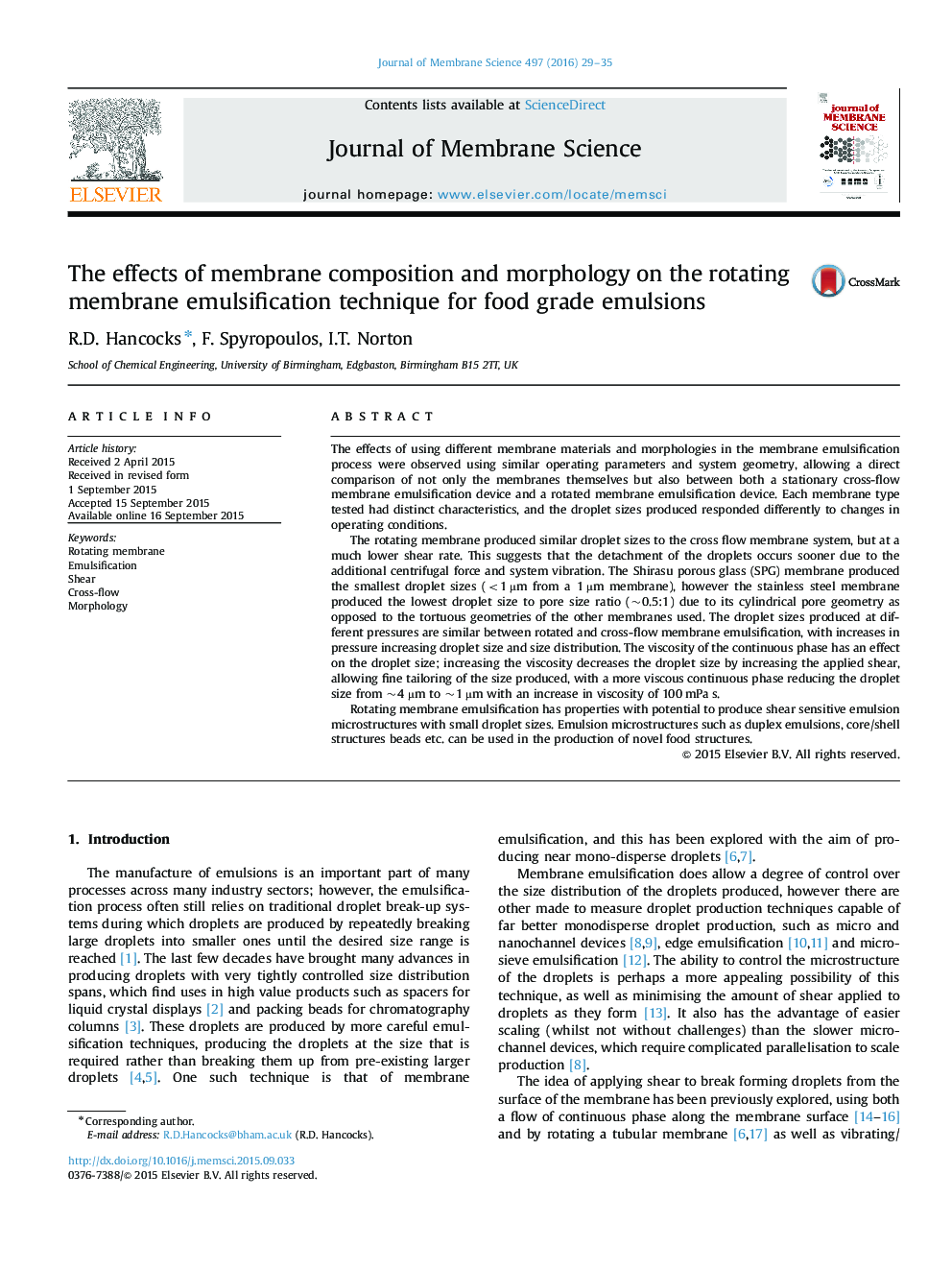| کد مقاله | کد نشریه | سال انتشار | مقاله انگلیسی | نسخه تمام متن |
|---|---|---|---|---|
| 632642 | 1456002 | 2016 | 7 صفحه PDF | دانلود رایگان |
• We examine materials used as membranes in rotating membrane emulsification.
• We compare similar membranes between rotating and cross-flow membrane emulsification.
• Rotating membranes produce equivalent droplets at lower shear than cross-flow systems.
• Rotating membrane emulsification has potential for producing shear sensitive microstructures.
The effects of using different membrane materials and morphologies in the membrane emulsification process were observed using similar operating parameters and system geometry, allowing a direct comparison of not only the membranes themselves but also between both a stationary cross-flow membrane emulsification device and a rotated membrane emulsification device. Each membrane type tested had distinct characteristics, and the droplet sizes produced responded differently to changes in operating conditions.The rotating membrane produced similar droplet sizes to the cross flow membrane system, but at a much lower shear rate. This suggests that the detachment of the droplets occurs sooner due to the additional centrifugal force and system vibration. The Shirasu porous glass (SPG) membrane produced the smallest droplet sizes (<1 µm from a 1 µm membrane), however the stainless steel membrane produced the lowest droplet size to pore size ratio (~0.5:1) due to its cylindrical pore geometry as opposed to the tortuous geometries of the other membranes used. The droplet sizes produced at different pressures are similar between rotated and cross-flow membrane emulsification, with increases in pressure increasing droplet size and size distribution. The viscosity of the continuous phase has an effect on the droplet size; increasing the viscosity decreases the droplet size by increasing the applied shear, allowing fine tailoring of the size produced, with a more viscous continuous phase reducing the droplet size from ~4 µm to ~1 µm with an increase in viscosity of 100 mPa s.Rotating membrane emulsification has properties with potential to produce shear sensitive emulsion microstructures with small droplet sizes. Emulsion microstructures such as duplex emulsions, core/shell structures beads etc. can be used in the production of novel food structures.
Journal: Journal of Membrane Science - Volume 497, 1 January 2016, Pages 29–35
